Had a very nice recent visit with Tom French. Before his recent retirement, Tom served as the Assistant Director, Natural Heritage & Endangered Species for MassWildlife. Tom is going to walk us through an overview of the Crow pellet dissection process, and then he’ll walk us through how he dissects an individual Crow pellet. Here is a quick look at his specimens, collection gear, and other gear.
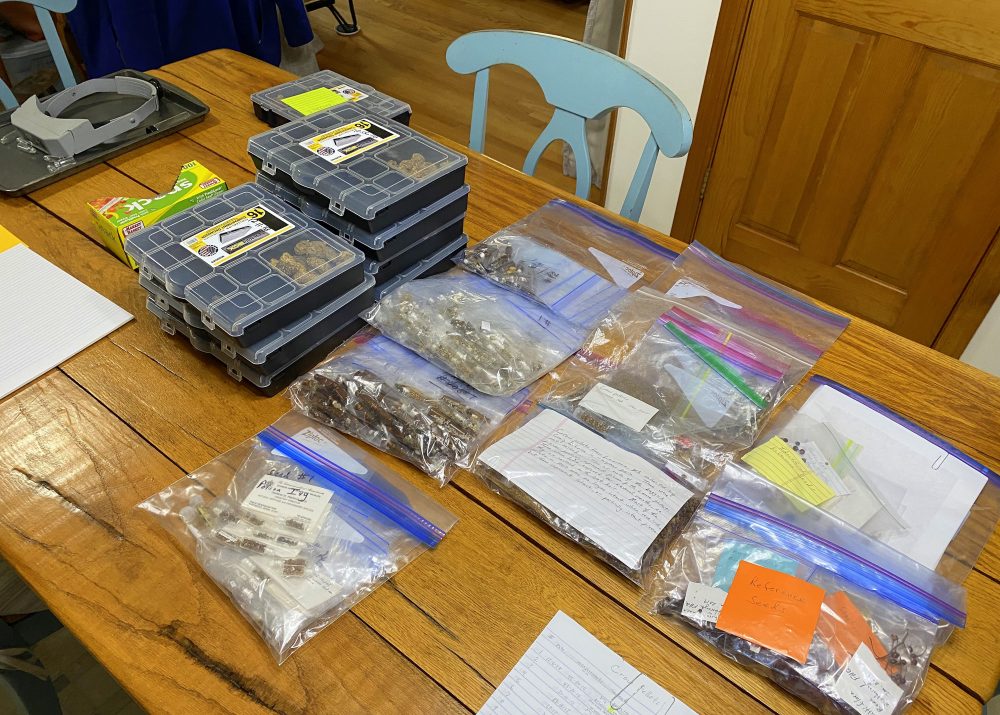
From Tom, here are his highlights:
- For each pellet, there’s the date of collection, the pellet has its own unique number one to a hundred plus.
- I’ve measured the length and the width of each pellet, that gives us a basic volume estimate for that pellet.
- In the future, give us some concept of what pellets might’ve come from American Crow versus Fish Crow,
- From each pellet, an assessment is made of what it contained.
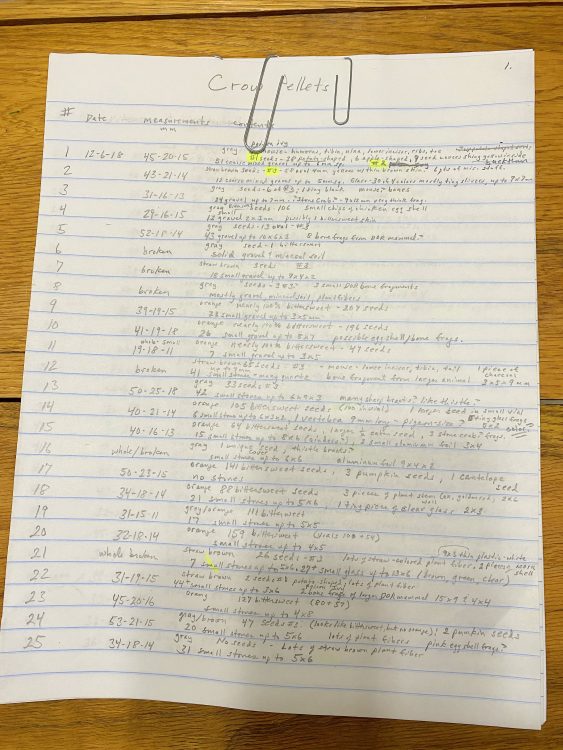
- The primary contents of almost all of the pellets were Asian bittersweet seeds
- I counted the actual number of seeds per pellets, and the numbers go up into the 100, to even 200 seeds per pellets is about roughly five seeds per bittersweet berry.
- Any other items such as pumpkin seeds, which they might’ve gotten out of somebody’s compost heap, whole kernel corn, which they might’ve gotten out of a field, poison ivy berries that are actually poison ivy seeds, which they got out of berries of poison ivy, which is actually an already know food item of crows.
- Gravel, which is consistent with small pieces of gravel from the parking lot’s there are both pieces of ground granite plus pieces of asphalt, plus multicolored glass, and the glass in particular is sort of indicative of a whole abandoned mill parking lot.
- Small shards of green and brown and clear glass that are in the pellets. We should’ve picked up is pieces of gravel would be to help grind food up in the gizzard.
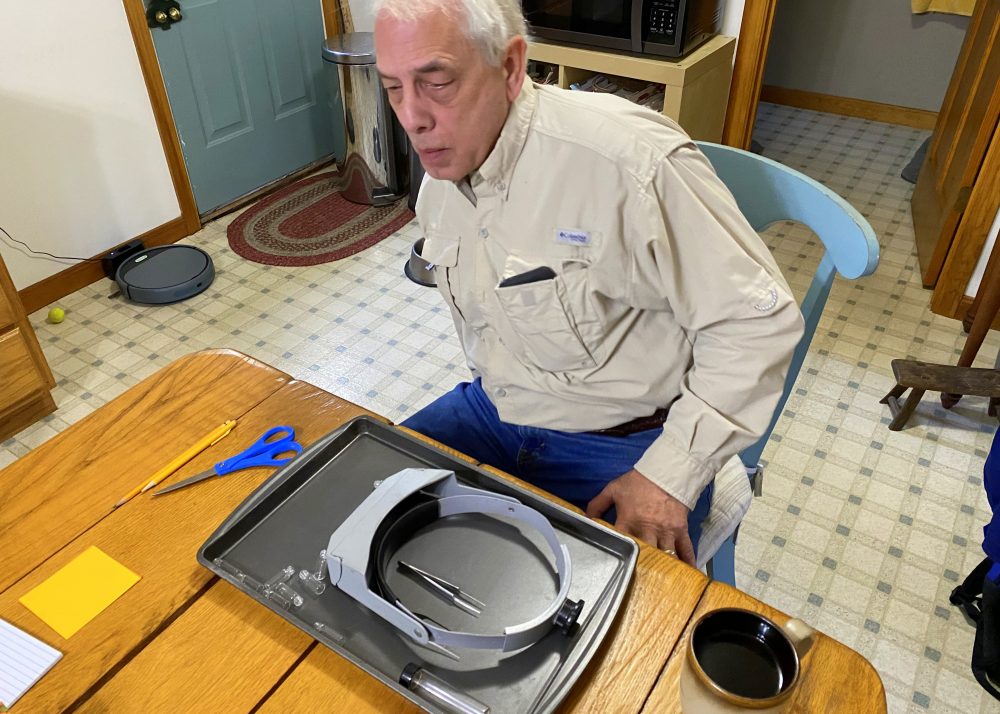
- I have here bags of reference seed material mostly.
- We have about 13 or 14 species of plant seeds. Some of them may have been completely accidental. Some were clearly deliberate, like the bittersweet, the poison ivy, pumpkin seeds, cantaloupe seeds, corn, a couple of pieces of millet or sunflower that might’ve come from around a bird feeder
- Cracked bits of bone that were indicative of roadkill from squirrel rabbit size animals, bones from whole animals that they might’ve either found as road kill, or even caught for that matter, like a few mice, possibly a shrew, a small snake, and a couple of small frogs.
- Each seed that I came across was just given a number one through about 13 or 14. About half of them I know what they are, and so you have a reference bag of those, and returning all the pellet materials that didn’t go through, which is actually quite a lot that you still have to go through.
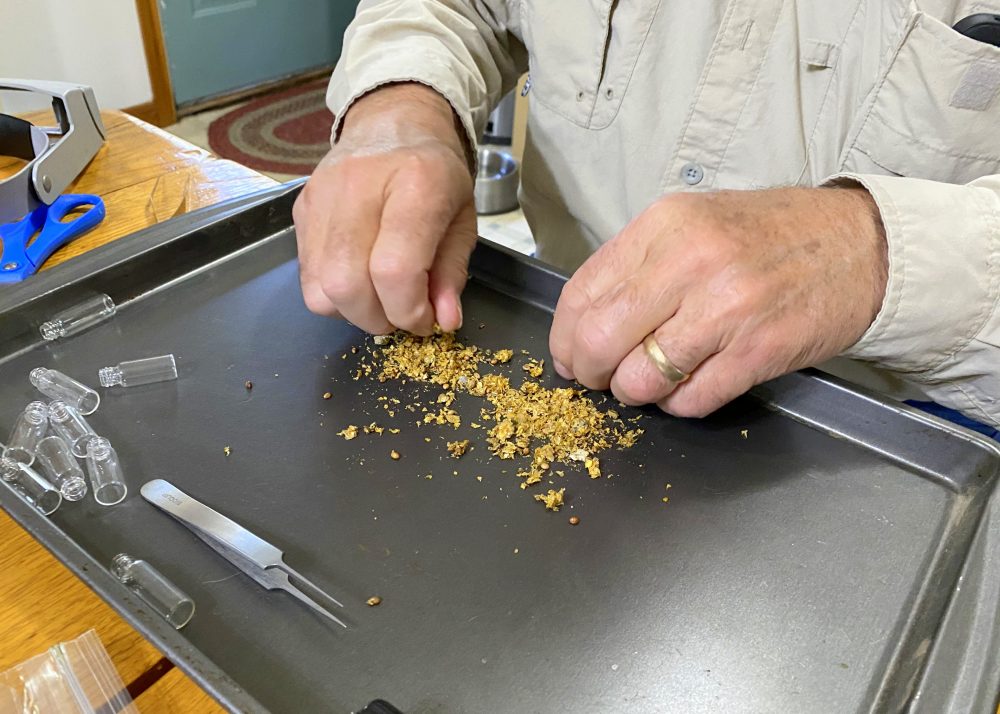
- The process of taking them apart, I’ve just used a baking sheet, a tray with a vertical side, so that things don’t roll off the tray.
- I typically crumble a pellet, measure it first length, width, crumble it apart, just rub it in my fingers, trying to get it into the smallest components, and as you do that, you’ll see the content start to appear.
- Be careful not to break any contents by rubbing it apart, but you’ll rub the matrix material off the pieces of gravel.
- Put the gravel in the pile, separate all the seeds out.
- There’s different kinds of seeds, separate them all into little piles.
- Count the individual seeds as you put them in a vile, any other materials.
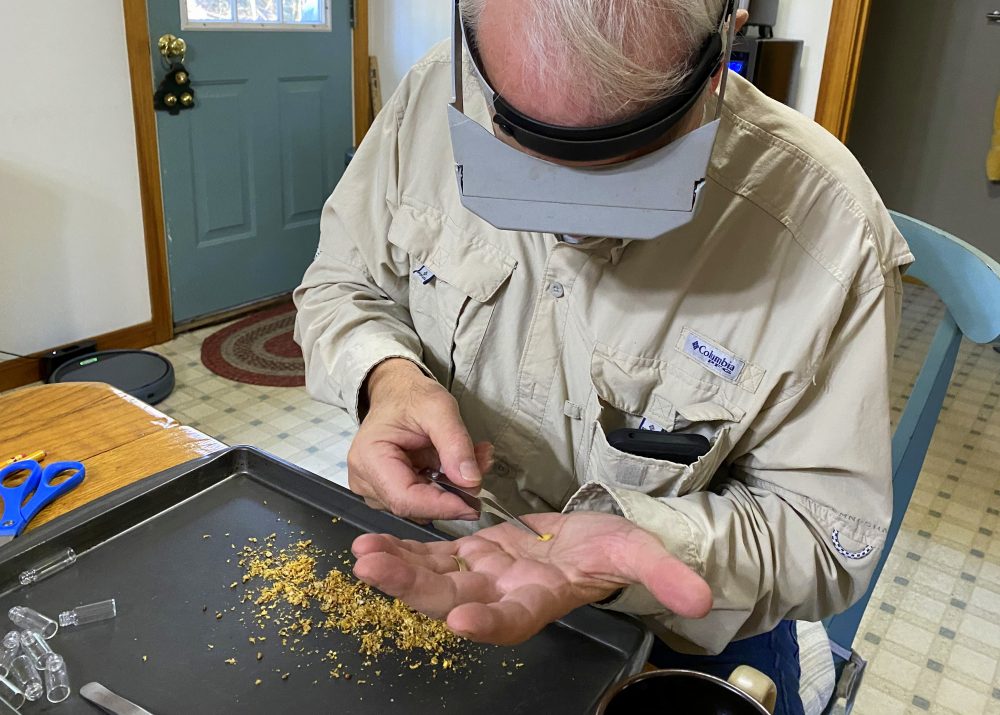
- For every single pellet describe or write down the contents from that pellet, and then put that pellet’s number on a Ziploc bag
- Little glass vials with their tops plugged with cotton for the seeds that ensures that they won’t get mold growing on them.
- Use as many vials as it takes to hold all the seeds.
- The vials hold all the different items separately, so that later on, if there’s ever any question about the identity of one of the food items, you can go back and reconfirm the quality control basically.
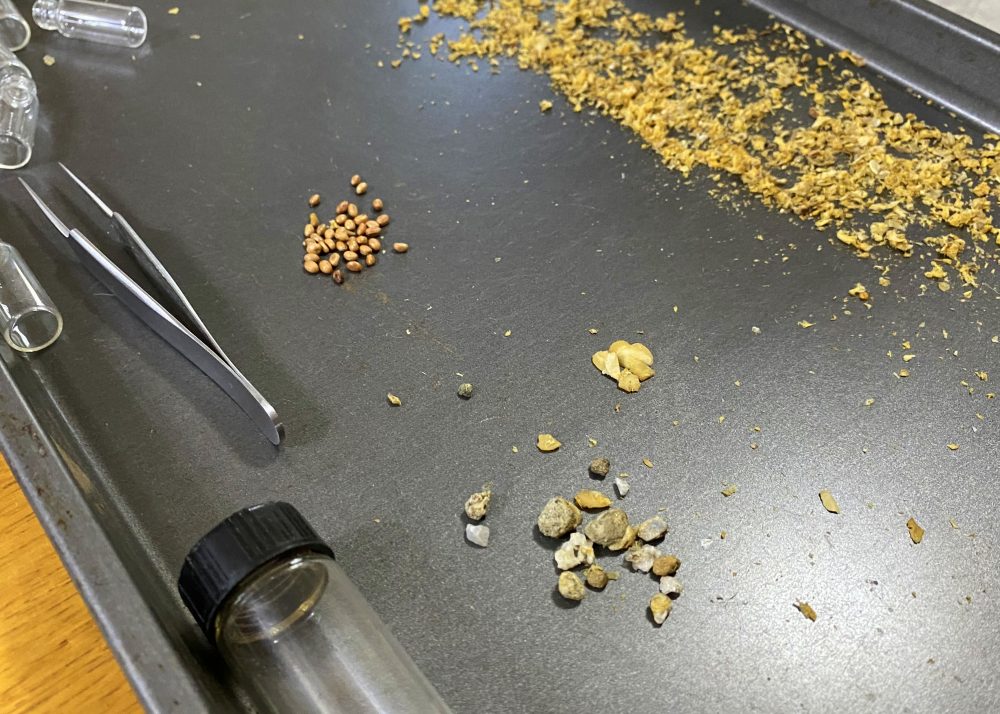
- Tools that have used to help are forceps.
- I have both the general insect holding forceps that are very flexible. They don’t break and crush things as delicate as an insect.
- I have the very sharply pointed firm forceps for other types of things to pick up.
- I have a head band magnifying lens, and it’s a Magni-Focuser, they come in different magnifications. They come in different magnifications from the company BioQuip.
- Ziploc bags, something to write on for a tag. I use a Sharpie, a big heavy duty to put a number on the outside of the bag. I like to have something on the inside oftentimes too as a label.
- Once you go through one, it’s a system that you just repeat over and over and over and over again until you’re finished with your batch. The hard part is dealing with the crumbled pellets!
Many thanks to Tom for sharing his wisdom, guidance, and sage advice on how to collect, store, dissect, and analyze these Crow pellets!


Amazing and interesting. Thanks for sharing.
This is a great help. Thank you. I recently came across a crow pellet. I watched the crow regurgitate it. I did not know they produced these. I truly appreciate your detail oriented collection techniques. Very valuable information indeed!